Abstract
A method is described for the efficient concentration of viruses from large volumes of tap water in relatively short time periods. Virus in acidified tap water in the presence of aluminum chloride is adsorbed to a 10-inch (ca. 25.4 cm) fiberglass depth cartridge and a 10-inch pleated epoxy-fiberglass filter in series at flow rates of up to 37.8 liters/min (10 gallons/min). This filter series is capable of efficiently adsorbing virus from greater than 19,000 liters (5,000 gallons) of treated tap water. Adsorbed viruses are eluted from the filters with glycine buffer (pH 10.5) and the eluate is reconcentrated using an aluminum flocculation process. Viruses are eluted from the aluminum floc with glycine buffer (pH 11.5). Using this procedure, viruses in 1,900 liters (500 gallons) of tap water can be concentrated 100,000-fold in 3 h with an average recovery of 40 to 50%.
Full text
PDF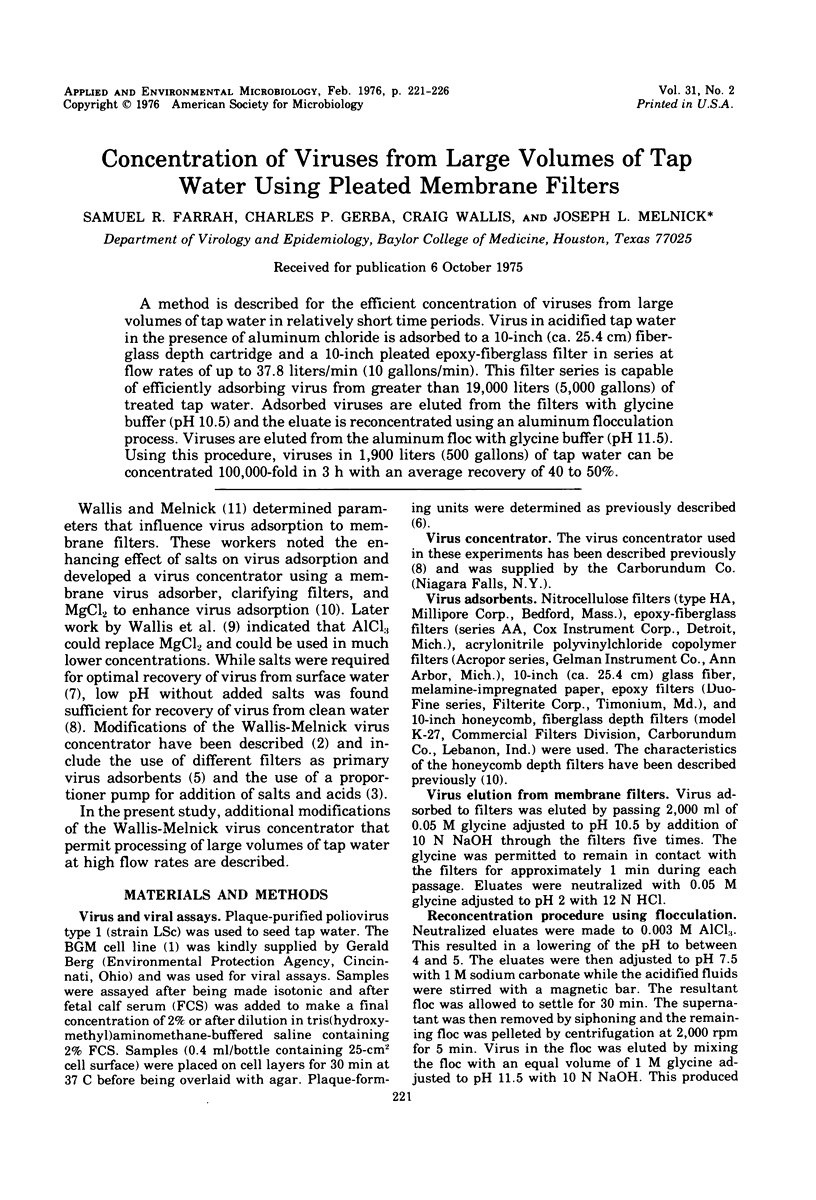
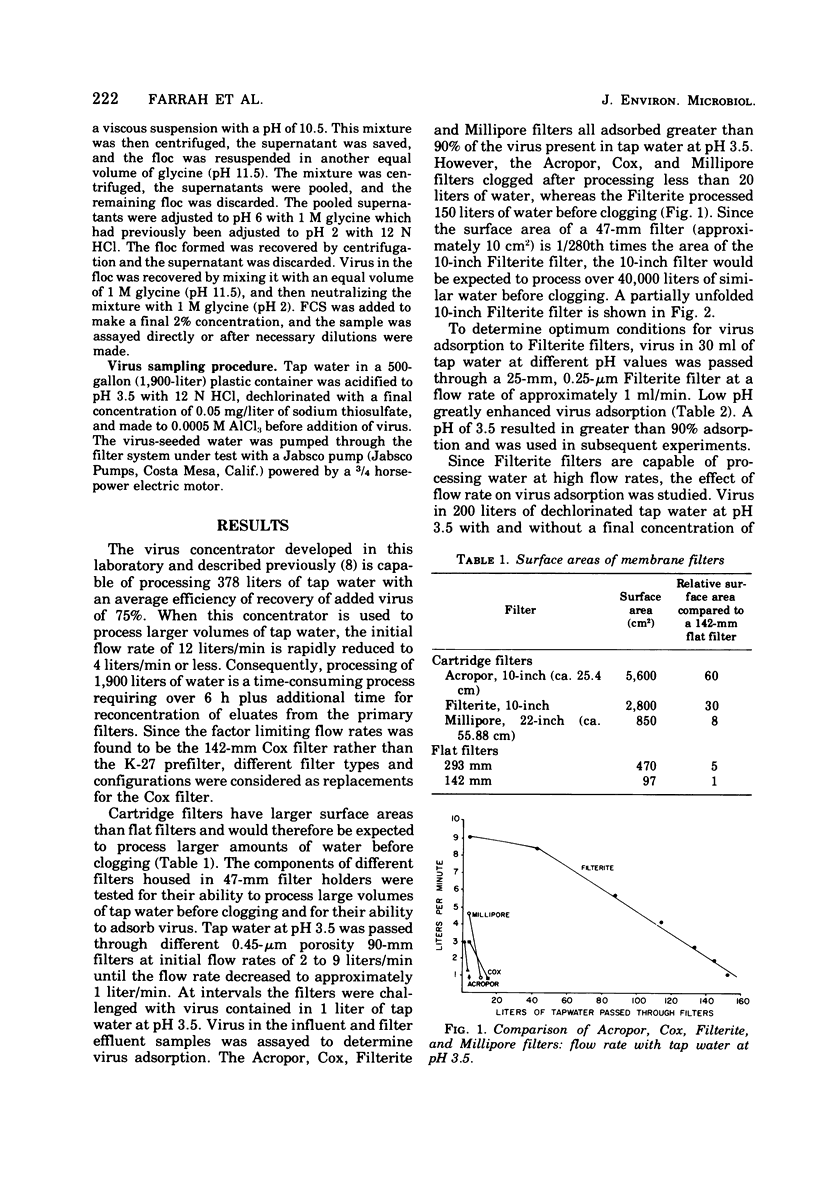
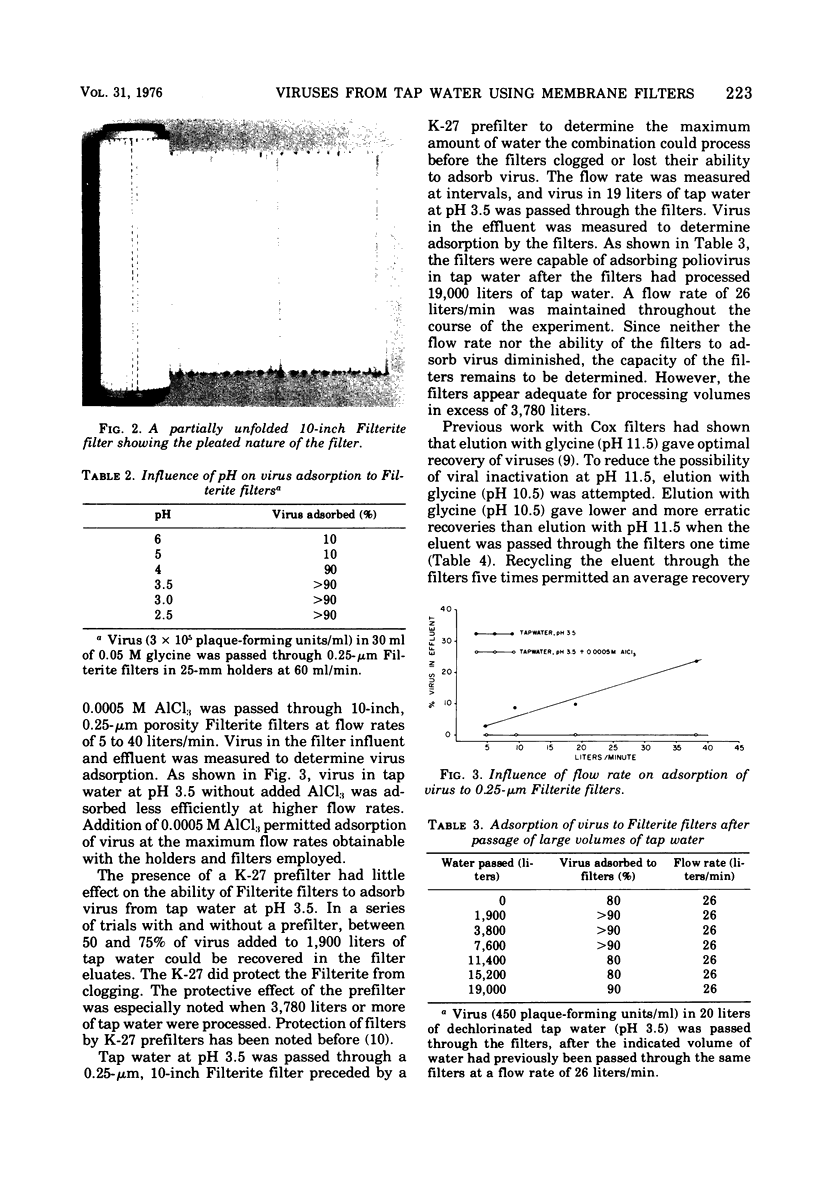
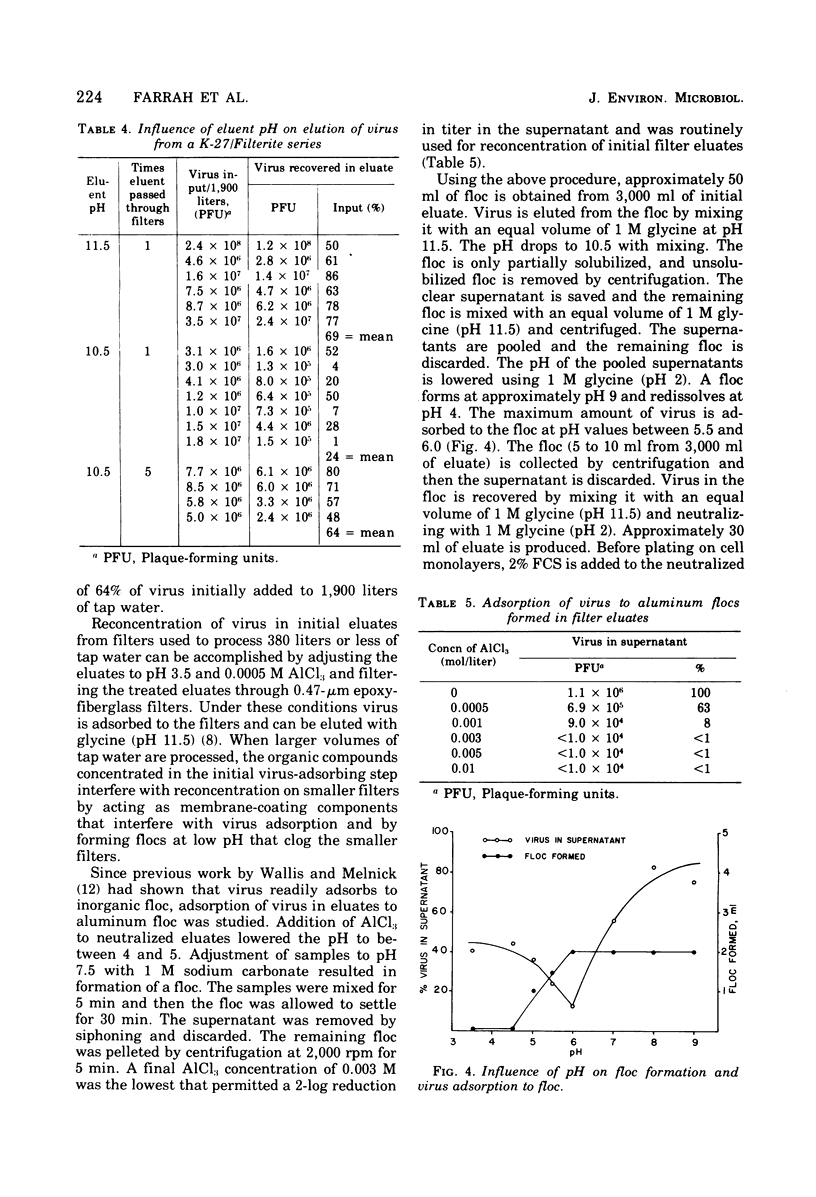
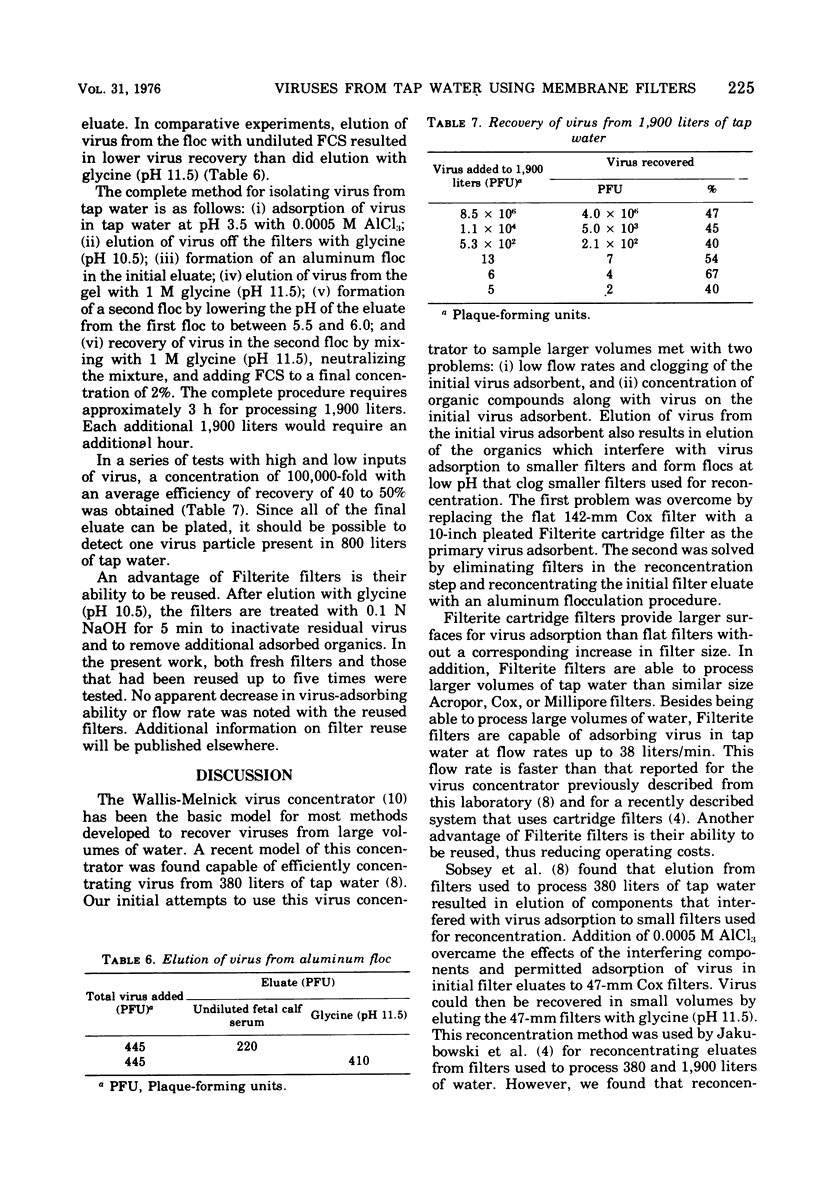
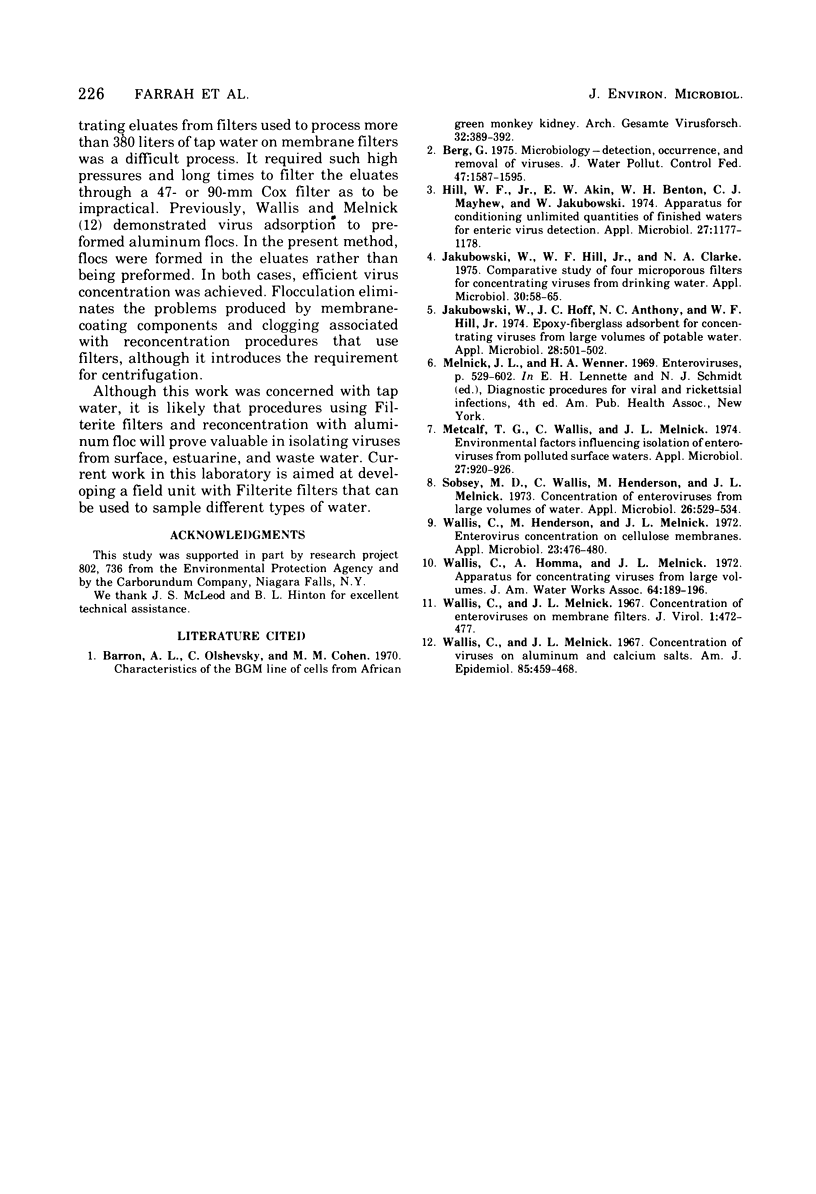
Images in this article
Selected References
These references are in PubMed. This may not be the complete list of references from this article.
- Barron A. L., Olshevsky C., Cohen M. M. Characteristics of the BGM line of cells from African green monkey kidney. Brief report. Arch Gesamte Virusforsch. 1970;32(4):389–392. doi: 10.1007/BF01250067. [DOI] [PubMed] [Google Scholar]
- Berg G. Microbiology-detection, occurrence, and removal of viruses. J Water Pollut Control Fed. 1975 Jun;47(6):1587–1595. [PubMed] [Google Scholar]
- Hill W. F., Jr, Akin E. W., Benton W. H., Mayhew C. J., Jakubowski W. Apparatus for conditioning unlimited quantities of finished waters for enteric virus detection. Appl Microbiol. 1974 Jun;27(6):1177–1178. doi: 10.1128/am.27.6.1177-1178.1974. [DOI] [PMC free article] [PubMed] [Google Scholar]
- Jakubowski W., Hill W. F., Jr, Clarke N. A. Comparative study of four microporous filters for concentrating viruses from drinking water. Appl Microbiol. 1975 Jul;30(1):58–65. doi: 10.1128/am.30.1.58-65.1975. [DOI] [PMC free article] [PubMed] [Google Scholar]
- Jakubowski W., Hoff J. C., Anthony N. C., Hill W. F., Jr Epoxy-fiberglass adsorbent for concentrating viruses from large volumes of potable water. Appl Microbiol. 1974 Sep;28(3):501–502. doi: 10.1128/am.28.3.501-502.1974. [DOI] [PMC free article] [PubMed] [Google Scholar]
- Metcalf T. G., Wallis C., Melnick J. L. Environmental factors influencing isolation of enteroviruses from polluted surface waters. Appl Microbiol. 1974 May;27(5):920–926. doi: 10.1128/am.27.5.920-926.1974. [DOI] [PMC free article] [PubMed] [Google Scholar]
- Sobsey M. D., Wallis C., Henderson M., Melnick J. L. Concentration of enteroviruses from large volumes of water. Appl Microbiol. 1973 Oct;26(4):529–534. doi: 10.1128/am.26.4.529-534.1973. [DOI] [PMC free article] [PubMed] [Google Scholar]
- Wallis C., Henderson M., Melnick J. L. Enterovirus concentration on cellulose membranes. Appl Microbiol. 1972 Mar;23(3):476–480. doi: 10.1128/am.23.3.476-480.1972. [DOI] [PMC free article] [PubMed] [Google Scholar]
- Wallis C., Melnick J. L. Concentration of enteroviruses on membrane filters. J Virol. 1967 Jun;1(3):472–477. doi: 10.1128/jvi.1.3.472-477.1967. [DOI] [PMC free article] [PubMed] [Google Scholar]
- Wallis C., Melnick J. L. Concentration of viruses on aluminum and calcium salts. Am J Epidemiol. 1967 May;85(3):459–468. doi: 10.1093/oxfordjournals.aje.a120708. [DOI] [PubMed] [Google Scholar]



